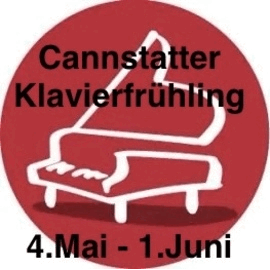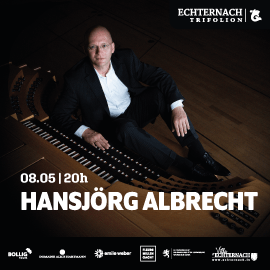Der katalanische Komponist Robert Gerhard (1896-1970), Sohn eines Schweizers und einer Elsässerin, wurden durch den Bürgerkrieg aus seinem Geburtsland Spanien vertrieben und kam auf Umwegen nach Cambridge, wo er auch die britische Nationalität erhielt. Die Orchestrierung eines seiner Werke, das Ballett La Noche de San Juan (auch als Soirées de Barcelone bekannt), wurde durch den Bürgerkrieg vereitelt, und die Musik existiert nur als Klavierwerk in drei Teilen und 11 Szenen.
Die Handlung spielt in einer Stadt in den Pyrenäen von Lleida am Abend der Sonnenwende, dem Vorabend des Johannistags. Prägend für das Ballett sind die im Volksgut der Gegend inspirierten Tänze. José Ramón Ripoll schreibt dazu: « Er war 1928 nach Barcelona zurückgekehrt, nachdem er in Wien und Berlin gelebt hatte, wo er ein direkter Schüler Schönbergs war. Bei dem Wiener Meister lernte er jedoch mehr Harmonie als Dodekaphonismus, und in La noche de San Juan kann man die perfekte Verbindung gleichzeitiger Tonalitäten schätzen, die eine klangliche Atmosphäre schafft, die der seriellen Musik nahe kommt, ohne die Reihe der zwölf Naturtöne zu verwenden. In der Klavierfassung, die Gerhard ohne Dynamik, Spannungen oder Artikulationen hinterlassen hat und die der Pianist Miguel Baselga aus dem in Cambridge aufbewahrten Manuskript sorgfältig rekonstruiert hat, können wir sehen, wie der Komponist bei der Behandlung der populären Themen unterschiedliche Tonalitäten für jede Hand verwendet und dabei stets die Frische des Tanzes oder des primitiven Liedes beibehält, als ob sie einer Quelle entspringen würden. »
Die traditionelle Musik geht also bei Gerhard in einer modernen Tonsprache auf, die teils lyrisch, teils motorisch ist und von Baselga spannungsvoll und spontan sowie zugleich auch sehr evokativ gespielt wird.
The Catalan composer Robert Gerhard (1896-1970), son of a Swiss and an Alsatian, left his native Spain during the Civil War and arrived in a roundabout way in Cambridge, where he also received British nationality. The orchestration of one of his works, the ballet La Noche de San Juan (also known as Soirées de Barcelone), was thwarted by the Civil War, and the music exists only as a piano work in three parts and 11 scenes.
The action takes place in a town in the Lleida Pyrenees on the evening of the solstice, the eve of St. John’s Day. The ballet is characterized by dances inspired by the folklore of the area. José Ramón Ripoll writes: « He had returned to Barcelona in 1928, after living in Vienna and Berlin, where he was a direct disciple of Schönberg. However, with the Viennese master he learned more harmony than dodecaphonism, and in La noche de San Juan one can appreciate the perfect conjunction of simultaneous tonalities, which creates a sonorous atmosphere close to serial music without using the series of the twelve natural sounds. In the piano version that Gerhard left without dynamics, tensions or articulations, and that the pianist Miguel Baselga has rigorously reconstructed from the manuscript preserved in Cambridge, it can be observed how in the treatment of the popular themes the author uses different tonalities for each hand, maintaining at all times the freshness of the dance or the primitive song, as if they emerged from a spring. »
In Gerhard’s work, then, traditional music merges into a modern tonal language that is part lyrical, part motoric, and played by Baselga with tension and spontaneity, as well as being highly evocative at the same time.






















